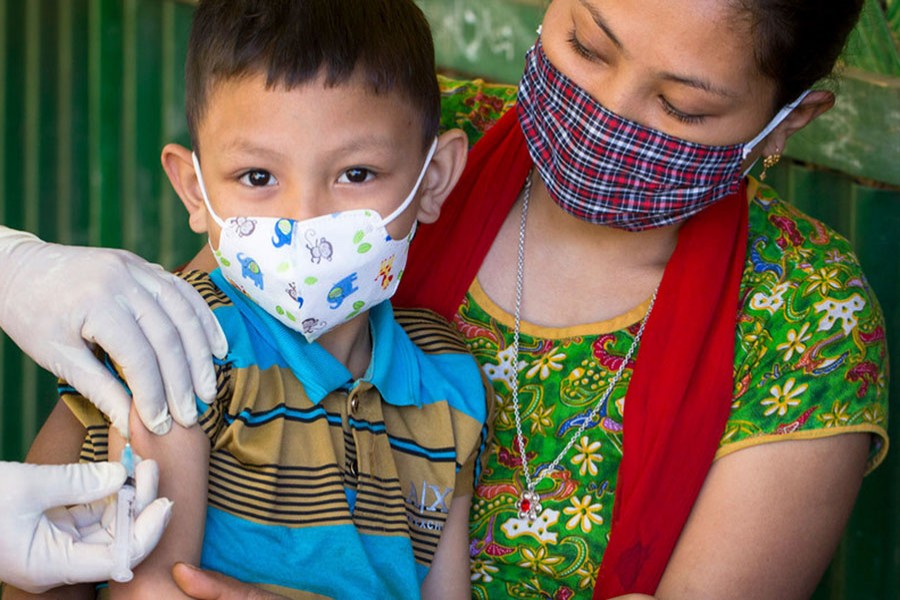The COVID-19 pandemic has led to major reductions in childhood vaccinations in South Asia, with coverage of basic vaccination dropping by 6 per cent points from 2019 to 2020, according to official data published Thursday by WHO and UNICEF.
More than 5.3 million children in South Asia missed out on essential vaccines through routine immunisation services in 2020 – nearly 1.9 million more than in 2019, their data find. This is the highest number of under-vaccinated children since 2014.
Between 2019 and 2020, the South Asia region experienced a sharp decline in children receiving three doses of the diphtheria-tetanus-pertussis (DTP3) vaccine, falling from 90 per cent to 84 per cent.
The percentage of children covered by three doses of the diphtheria-tetanus-pertussis (DTP3) vaccine had increased steadily from 6.0 per cent in 1980 to a record high of 90 per cent in 2019 in South Asia.
“It is heartbreaking to see this reversal in child vaccinations due to COVID-19 in a region where tremendous progress was being made, thanks to political will and collective action,” said George Laryea-Adjei, UNICEF Regional Director for South Asia.
“Nearly 4.4 million children are not even receiving a single dose of a vaccine that can protect them from deadly diseases, which is almost twice as many as the previous year. This is a huge setback for children in South Asia, as it puts their lives at risk, and leads to unspeakable suffering,” George said.
The majority of countries in South Asia experienced drops in childhood vaccination rates. The rates for DTP3 reduced by 9.0 per cent points in Nepal; 7.0 per cent points in Pakistan; 6.0 per cent points in India; 3.0 per cent points in Sri Lanka and 2.0 per cent points in Bhutan, and Afghanistan.
However, robust recovery efforts mounted in many countries towards the end of the year helped to blunt the impacts of overall declines. In India, for example, vaccination drives in remote areas are helping to reach missed children.
Globally, the data shows that just 10 countries account for 62 per cent of all under- or unvaccinated children globally. India – particularly hard hit by the COVID-19 pandemic – had the highest number of unprotected children worldwide at 3.5 million, an increase of 1.4 million. Pakistan had 1.3 million unprotected children in 2020, an increase of 0.4 million.
Concerningly, most of these children did not receive a single vaccine during the year, an indication that the most vulnerable, hard-to-reach children are paying the steepest price for pandemic-related disruptions to vaccine access.
At nearly 4.4 million, in 2020 South Asia recorded the highest number of children having failed to receive any routine vaccination in the past ten years. More than 3.0 million of these “zero-dose children” in 2020 lived in India.
Measles remains a concern, as well as outbreaks of diseases like diphtheria and yellow fever which can spread quickly where people are unvaccinated. In South Asia, coverage for the first dose of the measles vaccine fell from 92 per cent in 2019 to 88 per cent in 2020.
This is well below the 95 per cent recommended by WHO to protect against measles. South Asia has had lengthy school closures, which have had significant ramifications for several vaccines such as HPV, which is critical for the achievement of cervical cancer elimination, and which is offered to children and adolescents at school.


